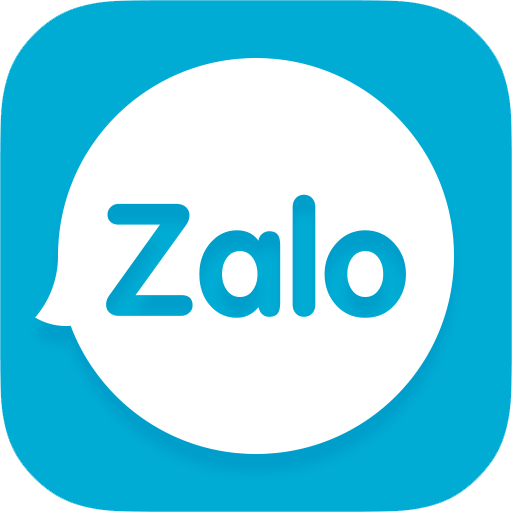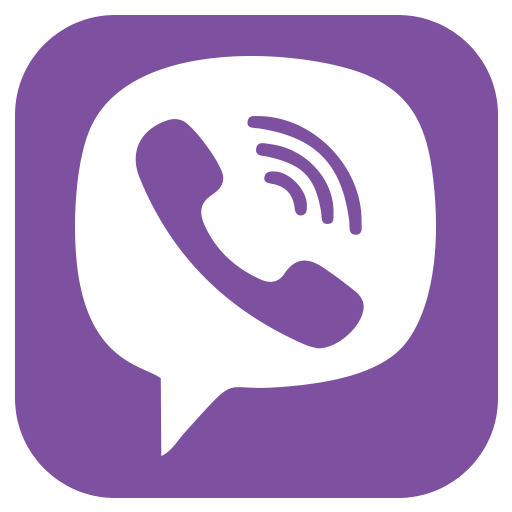Smartphone users are increasingly demanding on the experience when using mobile applications. An application with a beautiful, easy-to-use interface will quickly win the hearts of users, creating a superior competitive advantage for businesses. Therefore, designing a mobile app interface is not simply the job of a programmer or designer, but an important part of the product development and branding strategy.
.jpg)
What is mobile app interface design?
Mobile app interface design is the process of creating a visual appearance for an application on a mobile device. The user interface (UI) includes not only colors, icons, layouts but also must be harmoniously combined with the user experience (UX) to ensure that the app is not only beautiful but also easy to use. The ultimate goal of app interface design is to help users interact with the application in the most smooth, intuitive and effective way.
Why is mobile app interface design important?
A mobile application may have many excellent features, but if the interface is complicated and difficult to use, the possibility of users uninstalling it is very high. On the contrary, apps with simple, easy-to-use, synchronized and aesthetically pleasing designs are often better rated by users, thereby increasing retention rates and creating long-term value.
According to statistics, up to 38% of users will stop using an application if the interface is not attractive or the experience is poor. This is a remarkable number, showing that investing in mobile app interface design is a strategic decision, especially for businesses developing mobile platforms.
Elements that make up an impressive mobile app interface
.jpg)
Simple design, optimized experience
Simplicity is key in app interface design. A cluttered interface with many unnecessary details will confuse and disengage users. Instead, the design should focus on clear, easy-to-use navigation with recognizable icons, giving a friendly feeling to the user.
Consistent colors and images
One of the important criteria in designing an app for business is consistency in color, font, and images. This helps the brand become more professional in the eyes of users. Colors should be chosen to suit the industry, target users, and market trends.
Fast interface loading speed
A beautifully designed mobile app with slow loading speed will result in a bad experience. The design needs to be optimized so that visual elements and transition effects run smoothly without consuming too many device resources. This is an important criterion that Mobile app design companies need to pay attention.
Cross-platform friendly
With the diversity of mobile devices today, an effective app interface design must ensure compatibility across many different types of screens. The interface must not only look good on iOS but also be smooth on Android. This requires professionalism from a reputable app design company with experience in cross-platform development.
User-centric design
There is no fixed formula for mobile app interface. Each app has a different user group, with different needs and behaviors. Therefore, the design process should start with researching the target users. This is why many businesses choose custom app development companies instead of using ready-made design templates.
Benefits of investing in professional mobile app interface design
Increase user retention
A beautiful interface helps users feel good at first sight, prolongs the time they use the app, thereby increasing the chance of conversion.
Increase brand awareness
Professional design helps businesses create their own impression in the eyes of customers, contributing to building a reputable brand image in the digital environment.
Reduce future maintenance costs
Apps with a well-designed interface will have fewer operational errors, saving time and costs for future upgrades and repairs.
Improve business performance
For e-commerce or service apps, an easy-to-use interface will help increase orders, optimize revenue, and reduce cart abandonment rates.
Outstanding mobile app interface design trends in 2025
-
Flat design: Prefers minimalism, minimizes 3D effects or shadows to make the interface lighter and more modern.
-
Dark Mode: Dark background interfaces are increasingly popular thanks to eye protection and battery saving for devices.
-
Personalized interface customization: The interface can change according to user habits to enhance the experience.
-
AI and Animation Integration: Flexible interactive interface thanks to smooth animations and smart suggestions.
How to choose the right mobile app design company
There are hundreds of app design service providers on the market today, but not all companies meet the standards of expertise, workflow and security. To choose a company To design a reputable app on demand , you should pay attention to the following criteria:
Have real combat experience
Prioritize companies that have designed many successful projects, especially in the field you are doing business in. Experience helps them understand user behavior and interface trends that are suitable for each customer group.
Clear workflow
A company Professional app design in HCM will always provide a transparent working process, from requirements survey, prototype design, development to testing and maintenance. This ensures on-time progress and output quality.
Design app according to real requirements
Many companies only provide pre-made interfaces that are not optimized for your business goals. Therefore, choose a mobile app design company that is customizable and Design app according to your requirements.
Have own technical and design team
A successful app project requires close collaboration between the engineering and design teams. Businesses should prioritize companies that have full programming, UI/UX design, testing, and project management departments.
Clear after-sales service and warranty
After the project is completed, the app will still need updates, bug fixes, and technical support. A professional custom app development company will commit to long-term maintenance to ensure the app is always running smoothly.
Professional mobile app interface design process
User Interface (UI) design is one of the most important steps that determines the user experience (UX) of a mobile application. A professional design process not only ensures aesthetics but also optimizes performance and increases user interaction. Below are the basic but extremely important steps in a professional mobile app interface design process :
Step 1: Receive and analyze customer requests
The first stage is the process of exchanging information between the business (customer) and the design unit. Here, the design team will listen and receive specific requests from the customer, including:
-
The purpose of building the application (e.g. sales, service provision, customer support, etc.)
-
Target audience (age, usage behavior, preferred platform…)
-
Field of operation and industry characteristics
-
Main functions needed in the app
-
Requirements for color, logo, brand identity
Receiving the requirements completely and accurately will help ensure that the subsequent application is on target and achieves optimal efficiency.
Step 2: User experience (UX) research and market analysis
This is an important step to help determine the appropriate design direction. The UX Designer team will proceed to:
-
User behavior research : Understand the habits, desires, and pain points of the target user group.
-
Competitor Analysis : Look at similar apps on the market, learn their strengths and avoid their weaknesses.
-
Update design trends : Ensure the interface is always modern, easy to use and keeps up with the latest UI/UX design trends such as minimalism, neumorphism, dark mode,...
From here, the design team can build a sound design strategy that aims for a seamless, intuitive, and effective user experience.
Step 3: Brainstorm ideas, sketch wireframes and create prototypes
Wireframe – Sketch out the preliminary structure
Wireframe is a diagram of the main components in the app interface, helping to determine the location of buttons, navigation bars, images, text boxes... This document acts as a foundation for both customers and designers to have an overview of the application layout.
Prototype – Interactive product simulation
Once the wireframes are agreed upon, the design team builds a prototype – an interactive mock-up of the interface. Users can tap buttons, see how screens move, and experience the flow of the app visually.
This process allows businesses to realistically test the user experience before going live, while also saving on editing costs later.
Step 4: Detailed interface design (UI Design)
At this stage, the entire app interface will be completed in terms of images and presentation style. Important elements include:
-
Primary and secondary color palette : Ensure consistency with brand identity
-
Font : Choose a font that is easy to read, harmonious and suitable for the app style.
-
Icons, function buttons, visual effects : Sharp, professional design
-
Layout and spacing : Balanced for comfort in use
The goal of this step is to create an interface that is not only beautiful, but also friendly, easy to use, and clearly conveys the brand message.
Step 5: Programming and integrating the interface with the system
Once the UI design is approved, the development team will begin building the application. This process includes:
-
Programming of agreed functions: login, ordering, payment, notification...
-
Integration with backend systems: database, API, server,...
-
Develop for different platforms like iOS (Swift) and Android (Kotlin, Java)
Programmers will ensure that the design interface is displayed exactly as the prototype on the actual device, operating smoothly, quickly and stably.
Step 6: Test, Evaluate, and Optimize Before Launch
Before officially releasing the app to the market, the QA (Quality Assurance) team will conduct comprehensive testing:
-
Function Test : Ensure all features are working properly
-
UI Test : Check compatibility on different screen sizes
-
Performance Test : Optimize loading speed, memory, response time
-
User Experience Testing (UX Test) : Identify points that may cause discomfort or disrupt the experience
In addition, the app is also continuously edited and optimized based on feedback from beta testers before being uploaded to app stores such as the App Store or Google Play.
A professional mobile app interface design process requires close coordination between many departments: customers, designers, programmers and testers. Each step plays a key role in ensuring that the final product is not only beautiful, easy to use but also effective in terms of business. Investing in a standard design process will help businesses own an outstanding application and attract users in today's fiercely competitive environment.
Conclude
In the context of users becoming increasingly demanding with digital experiences, serious investment in Mobile app design is essential if a business wants to assert its position in the market. A mobile app with a beautiful, easy-to-use interface will create strong sympathy, increase interaction and promote revenue quickly.
Thông tin liên hệ:
- Địa chỉ: 220/1 Nguyen Trong Tuyen Street, Ward 8, Phu Nhuan Dist., Hochiminh City, Vietnam
- Tel: (0084) 2839977249 - Fax: (0084) 2839977348
- Di động: (0084) 938136444 – Mr. Phong
- Email: info@engma.com.vn
- www.engma.com.vn



